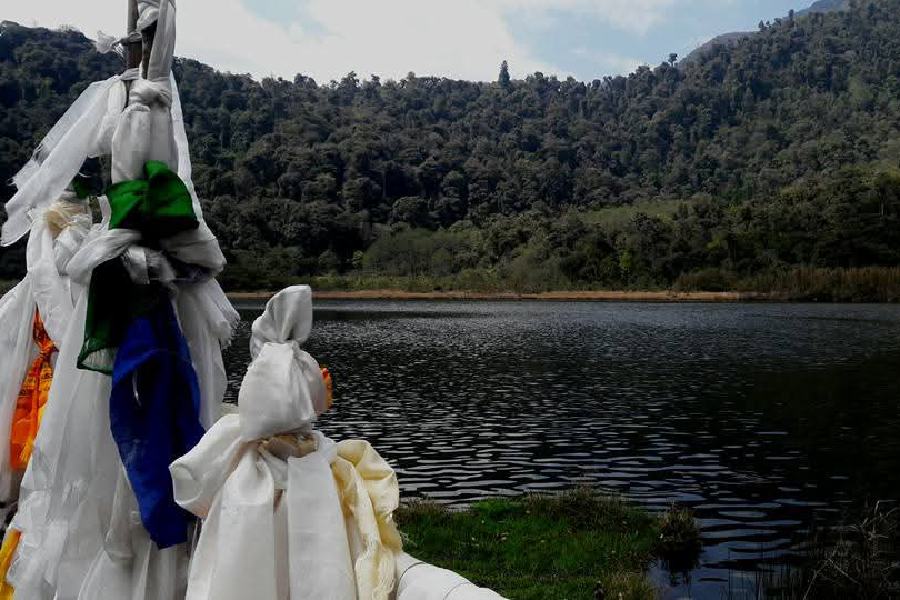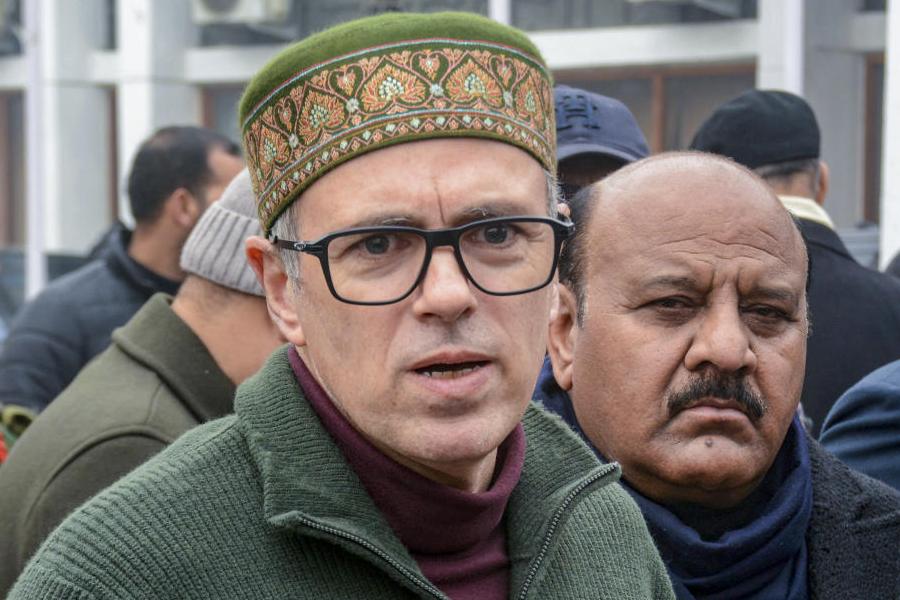Visualise a 3,500-year-old waterbody at an altitude of 1,700 metres amid a lush forest. Add to it the belief of Buddhist and Hindu pilgrims that this lake is so sacred that their wishes are fulfilled and it is easy to comprehend why Sikkim is rejoicing at Khecheopalri being recognised as a Ramsar site.
Located 34 kilometres northwest of Pelling in western Sikkim, this picturesque lake was originally called Khachotpalri and is locally still referred to as Sho Dzo Sho. Reaching it entails a fairly long trudge from the parking lot in the village by the same name (Tsozo). A beautiful little monastery stands at the start of the trail and the tree-lined path leads to a clearing where steps wend their way down to the edge of the lake, which has a foot-shaped periphery.
While Kha-chot-Palri translates into ‘heaven of Padmasambhava’, the local name literally means ‘O Lady, sit here.’ That is usually the foremost thought after the lengthy walk, although the only option is to let the beauty of the pristine surroundings, with fluttering prayer flags, drain away any sense of exhaustion, before the long trudge back.
Unfortunately, there is the usual rush by the overwhelming majority to perform puja on the shore of the lake, with its ritualistic sounds and the cacophony of inane touristy exclamations dispelling the serenity and litter adding to the pollution. On occasions like Nag Panchami, devotees flock to the lake because it is believed that Lord Shiva meditated near the lake in the Dupukney cave. Categorising it as a Ramsar site has been wholeheartedly welcomed by environmentalists in the hope that conservation mechanisms will now be put in place.
World Wetlands Day is celebrated every February and this year’s theme of “Protecting Wetlands for our Common Future” is particularly relevant. According to folklore, Khecheopalri represents one of the four plexuses of the human body, the thorax. The other three are said to be Yuksom (the third eye), Tashiding (the head) and Pemayangtse (the heart). Hardly any wonder that Pemayangste is not too far from this sacred lake.
How exactly will the coveted Ramsar tag help preserve this site? With efforts by Sikkim’s department of forest, environment and wildlife management, Khecheopalri lake’s recognition as a Ramsar site should receive legal and administrative protection, ensuring the conservation of its rich biodiversity and preventing ecological degradation. Since Ramsar sites receive national and international funding, other endangered lakes in the state, especially Gurudongmar, may acquire a ready roadmap for development.
India has 89 Ramsar sites, five of these waterbodies (including Khecheopalri) are in the northeastern states. These are Deepor Beel in Assam, Loktak in Manipur, Pala wetland in Mizoram and Rudrasagar in Tripura. If one were to visit these “wetlands deemed to be of international importance” today, the predominant reaction is one of acute disappointment. Deepor Beel is choking with water hyacinths, Loktak’s floating islands or phumdis are in need of sustenance, while Rudrasagar is sedimented and encroached upon (a boat ride to Neermahal, the palace in the middle of the lake, is far from smooth, although it was hastily spruced up for a visit by G20 delegates last year). Pala, too, is endangered by construction work and felling.
Given the tremendous environmental challenges across the globe, local efforts to catapult conservation initiatives, as in the case of Khecheopalri, must be lauded. But unlike several other Ramsar sites in the region, it should not be relegated to neglect. The picturesque lake, which is said to have healing powers, is certainly deserving of the UNESCO World Heritage Site status and all the key players must henceforth unitedly strive for this recognition.










